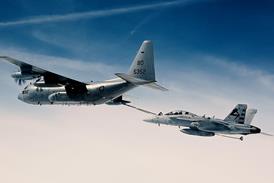It is tempting, almost, to feel sorry for the world's airlines. Just as they were beginning to enjoy credible profits and sustained traffic growth, they find themselves staring at a near-term future in which their own growth threatens disaster.
Any twinge of sympathy, however, is killed by the simple fact that the writing has been on the wall for a long time. Since 1990, when the effects of the gradual improvement in accident rates began to be overtaken by the increase in traffic, absolute accident numbers have been on the increase, and stern warnings have been repeated with almost tedious regularity about the fact that this would upset the airlines' customers. The carriers, however, are failing to improve their safety performance, so traffic growth alone is set to bear out the gloomy prophesy.
Meanwhile, airports are, at best, places to be suffered reluctantly and, at worst, they are the most frustrating, stress-creating, parts of a travelling experience which makes air-travel advertising footage look as if it were shot on another planet. The airlines and airport authorities, however, have failed to do anything which has successfully addressed the fact that having more customers demands smarter customer-processing if the experience is not to be degraded. With a firmly established global traffic growth-rate of about 7%, passengers might, in 2010, be recalling the mid-1990s as a relatively uncrowded golden age of air travel.
On 3 November, however, at the normally sedate International Air Transport Association's (IATA) annual general meeting, the leaders of the world's main airlines were confronted by IATA director-general Pierre Jeanniot in aggressive mode. Safety and "passenger-processing" topped the agenda.
This year, IATA presented safety as an issue which is not merely handled by hiring a good chief pilot, head of engineering and operations director and then is forgotten by the board. Flagged as the next priority was: "Passenger processing-simplifying the journey".
The question is, however, why has it taken IATA so long to acknowledge and promote safety as the most fundamental of all an airline's commercial assets, and to recognise that today's air travel is rarely a pleasant experience?
The proposed solution is to halve the accident rate by 2004. Great idea, but how? It is not the first time that the airlines have resolved to do better, then failed. Most safety improvements since the 1950s have come from progressively safer aeroplanes; there is very little evidence to suggest that top airline management has ever played a major role.
It was feared in 1977, when the USA began to deregulate, that competition would worsen safety. It has not done so, although dire warnings were also given when the old hierarchy of former pilots and engineers was replaced on the boards of surviving airlines by a new order of professional business executives. They have transformed the nature of many cartel-protected airlines into standalone, profit-making service providers, but they, too, have failed to improve safety any more than technology would have done on its own.
Jeanniot's warnings are late, but vital. Those same executives who brought efficiency and profit to the old-order carriers should turn their organisational and leadership talents to safety, recognising it for the commercial imperative that it is. If that entails more than just improving an already good safety record in their own carriers, and helping IATA to help those less-safe carriers which adversely affect the reputation of the global industry, so be it. The less-safe carriers, meanwhile, have to take on board the message that, increasingly, individual airlines will be shunned for poor safety reputations and, in a liberal marketplace, that will mean corporate death.
Finally, unless airlines, airports, security agencies and customs and immigration services can revolutionise the way they process the increasing flow of passengers, prophesies about the death of high-yield travel at the hands of the information-technology and communications industries could become self-fulfilling.
Source: Flight International























